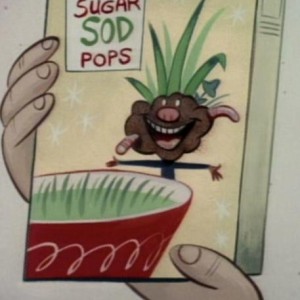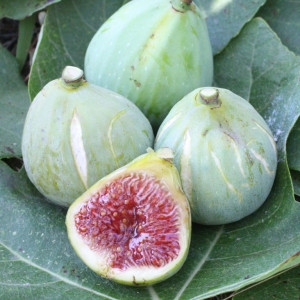This site contains affiliate links for which I may be compensated.
Desert King
Desert King Information


-
Possible Synonyms / AKA:
DFIC 85, Charlie, King, White King -
Introduced By:
-
Origin:
-
Main Flavor Group:
-
Family Group:
-
Fig Type:
San Pedro - Both Smyrna and common figs on one tree. Example dessert king, which will produce edible Brebas but need the was to ripen main crop figs. -
Cold Hardy:
Yes -
Container Variety:
No -
Easy Rooting:
N/A -
Main Season:
mid -
Availability:
N/A -
Breba Crop:
Yes -
Seed Crunch:
mild -
Eye:
small -
Skin Toughness:
soft -
Fruit Size:
Large -
Rain Resistance:
N/A -
Tree Vigor:
N/A -
External Links:
https://npgsweb.ars-grin.gov/gringlobal/accessiondetail.aspx?1002401
http://planetfig.com/cultivars/fcveng8588.html
http://figs4fun.com/Info/Info_Desert_King.html
http://seattlegardenfruit.blogspot.com/2018/07/taste-review-of-desert-king-fig-breba-7.html
https://www.ourfigs.com/forum/figs-home/333430-my-first-desert-king-breba-fig-really-sucked
http://seattlegardenfruit.blogspot.com/2015/07/fig-of-week-3-desert-king.html
Description
Top rated in the Pacific Northwest. A large fig with dark green skin and pink flesh. It is the most consistent cropper in our region. It only produces one crop each year, in August, produced on the previous seasons growth, so don't Prune more than half of that growth when pruning. In hot climes the Breba begin ripening in mid June and have been known to be pretty bland. In areas that are home to the Wasp , its Main crop ripens in August and has outstanding flavor
Condit Monograph
As King: The exact origin and identity of the King fig have not been determined. About 1930, cuttings from a fig tree growing near Madera, California, were planted by Sisto Pedrini, Western Evergreen Company, at Los Altos and at San Francisco. The young trees produced such excellent fruit that hundreds of plants were propagated and distributed in Pacific Coast states and elsewhere by the King Fig Plantation, San Francisco. See account by Brooks and Olmo (1949). The King tree is exceptionally prolific of the Breba crop, which often sets three to five or more fruits close together, somewhat like the crop of certain caprifigs. At Riverside, and in most other inland districts, the majority of second-crop figs shrivel and drop for lack of Caprification , a fact which places this variety in the San Pedro group of figs. In cool, coastal sections, a fair percentage of the crop matures by parthenocarpy, as explained elsewhere by Condit (1950).
Of all the varieties fruiting in the collection at Riverside, the King is unexcelled for the production of brebas. Few home owners, however, have found the King satisfactory, because of the severe dropping of the second crop and lack of knowledge as to the cultural methods most likely to give best results with this variety. Branches of King trees should not be cut back heavily in winter, as this removes the fruit buds which normally produce a Breba crop. A judicious thinning out of the older wood occasionally would seem to be the best procedure. The following description is of trees and fruit grown at Riverside since 1941.
Tree moderately vigorous. Leaves medium, 3- to 5-lobed; base subcordate; lateral sinuses broad, shallow; upper surface somewhat glossy, rugose; margins shallowly crenate.
Brebas above medium to large, short-pyriform, often oblique, with or without short, thick neck; average weight 88 grams; stalk short; ribs present, but not prominent; white flecks variable, large and widely scattered in some, small and numerous in others; eye large, scales chaffy or straw colored, semi-erect; color green; bloom prominent; meat thin, white; pulp strawberry; flavor rich; quality excellent. (Plate 16, A.)
Second-crop figs uncaprified, medium, with or without short neck; color greenish yellow; pulp amber to very light strawberry; seeds few, tender, hollow. Caprified figs with stalk very short and no neck; average weight 45 grams; color dark green; pulp dark strawberry; flavor rich; quality good. (Plates 12; 16, B.)
Other Comments
F4F: A medium greenish-yellow fig with strawberry pulp. Pyriform to oblique. It ripens a large Breba crop between late June and August. A San Pedro type, it sometimes sets Main crop figs without pollination. Sweet and rich. Well-adapted in the Northwest and cooler areas of the South. Fairly Hardy .
Robert Harper in Connecticut: Upon seeing Adriano getting huge crops from his Desert King, I figured if he could grow a fig as cold sensitive as Desert King in Canada, I should be able to grow cold Hardy figs in Connecticut. Desert King was found growing wild, sometime between 1920 and 1930, in Madera, California. It being found growing wild in California, you would think it is not a cold Hardy fig. But, because of its heavy bearing, and its excellent taste, a lot of gardeners in the north, simply had to have it. Upon planting Desert King in the north, most thought there was no way it would grow in the cold north. It not only proved most people wrong, but it also has ended up being the fig to grow in the cold north were the summers are too cool to grow Main crop figs. Whether you grow it in a pot or you grow it out side, and cover it for the winter, everyone should have a Desert King fig. The key to getting a fig through the cold northern winters, is planting the fig at a 45 degree angle from the ground That way it can be easily bent to the ground and covered for the winter. Hardiness Zone 7b/8a?
If you'd like your banner to be shown here and throughout Fig Database, send us a message.
Photos Add Your Image
YouTube Videos
No Videos Found
Member Descriptions


SugarSodPops From Zone 8 On Nov 11 2019
Excellent breba producer and a must have for short season growers. A staple fig of the PNW.














